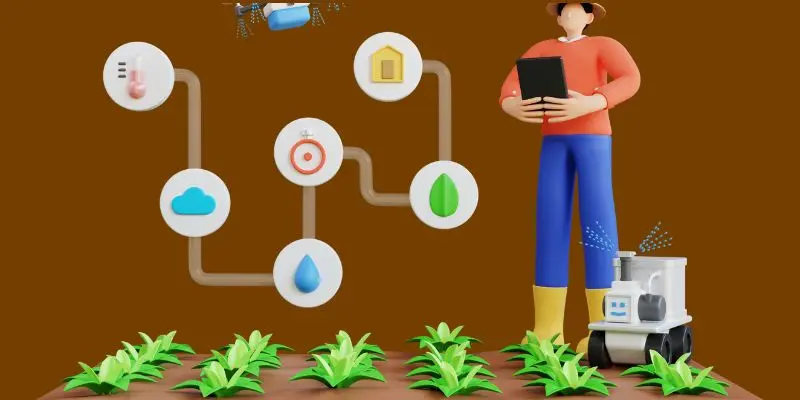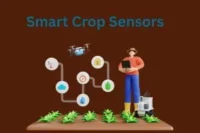Disease-Resistant Crops – Protect Your Harvest, Secure Your Future
Published: 15 May 2025
You prepare the land, sow the seeds, and wait with hope—but then it happens again. Yellowing leaves. Wilting stems. A strange mold creeping up overnight. Was it the weather? The water? The wrong seed? Despite your best efforts, disease seems to return every season, and you’re left questioning what went wrong. Is there something you’re missing—or is this just the risk of farming?
So, guys, without wasting time, let’s jump into the article to learn the Disease-Resistant Crops – Protect Your Harvest, Secure Your Future
What Are Disease-Resistant Crops?
- These are crop varieties bred or engineered to naturally withstand specific pathogens, including fungi, bacteria, and viruses.
- Resistance does not mean immunity but reduces the chance or severity of infection.
- Developed through selective breeding, hybridization, or biotechnology (e.g., CRISPR, GMOs).

Why Are Disease-Resistant Crops So Important?
- Lower input costs: Less need for fungicides, bactericides, and repeat applications.
- More stable yields in unpredictable climates and high-risk areas.
- Reduced crop failure and better post-harvest quality.
- Environmental benefits: Less chemical runoff and improved soil life.
Major Diseases and Their Resistant Varieties
Here are examples of common diseases and the crops bred to resist them:
- Tomatoes: Resistant to Fusarium wilt, Verticillium wilt, and late blight
- Wheat: Rust-resistant varieties reduce losses by up to 60%
- Rice: Resistant to bacterial blight and rice blast (a major yield killer in Asia)
- Potatoes: Varieties like ‘Sarpo Mira’ resist late blight
- Corn (Maize): Resistant to Southern leaf blight, root rot
How Are Resistant Crops Developed?
- Conventional breeding: Cross-pollinating naturally resistant plants over several generations.
- Genetic engineering: Inserting resistance genes (e.g., Bt, virus coat proteins) into crops for precise protection.
- Genome editing (CRISPR): Fine-tuning plant genes to turn on natural defenses.
- Resistance can also be polygenic (controlled by many genes) for more durable resistance.
How to Select the Right Disease-Resistant Crop
- Start with a local disease risk assessment – what pathogens are most common in your area?
- Choose seed varieties recommended by local extension services or seed banks.
- Check for resistance codes (e.g., VFN for tomatoes: Verticillium, Fusarium, Nematodes).
- Balance disease resistance with yield, climate adaptability, and market preference.
Integrating Resistance with Smart Farming
- Resistant crops work best when used as part of Integrated Pest and Disease Management (IPDM).
- Rotate crops to avoid pathogen buildup.
- Use resistant varieties alongside proper spacing and airflow.
- Enhance soil health to improve plant immunity.

- “Resistance is powerful, but it’s strongest when not used alone.”
Are Resistant Seeds Worth the Investment?
- They might be slightly more expensive up front but:
- Lower need for costly chemical treatments
- Less crop loss during disease outbreaks
- Higher returns from healthy harvests
- For smallholder farmers, they offer resilience against total loss.
| Environmental and Health Advantages |
|---|
|
Challenges and Misconceptions
- Some believe all resistant crops are GMOs—many are non-GMO hybrids.
- Resistance can break down if not supported with good farming practices.
- Over-reliance without rotation can lead to new pathogen strains.
Global Reach and Local Success Stories
- In India, Bt cotton drastically reduced pesticide use and farmer deaths from chemical exposure.
- In sub-Saharan Africa, virus-resistant cassava is restoring food security.
- Emotional Hook: “For millions, a single resistant crop meant the difference between hunger and survival.”
Final Thoughts
- Disease-resistant crops are more than just science—they’re a solution to fear, risk, and uncertainty.
- They offer farmers the power to fight back, to grow with hope instead of hesitation.
- “When your seed is strong, your soil is protected, and your future is secure.”
Please Write Your Comments


`
Comments (0)

INSTRUCTIONS:
- Be Respectful
- Stay Relevant
- Stay Positive
- True Feedback
- Encourage Discussion
- Avoid Spamming
- No Fake News
- Don't Copy-Paste
- No Personal Attacks

INSTRUCTIONS:
- Be Respectful
- Stay Relevant
- Stay Positive
- True Feedback
- Encourage Discussion
- Avoid Spamming
- No Fake News
- Don't Copy-Paste
- No Personal Attacks





